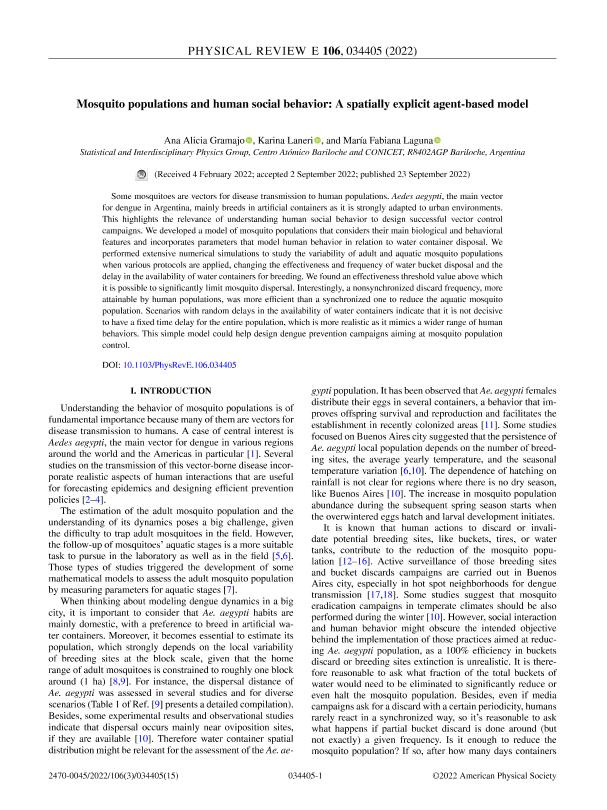Artículo
Mosquito populations and human social behavior: A spatially explicit agent-based model
Fecha de publicación:
09/2022
Editorial:
American Physical Society
Revista:
Physical Review E: Statistical, Nonlinear and Soft Matter Physics
ISSN:
1539-3755
Idioma:
Inglés
Tipo de recurso:
Artículo publicado
Clasificación temática:
Resumen
Some mosquitoes are vectors for disease transmission to human populations. Aedes aegypti, the main vector for dengue in Argentina, mainly breeds in artificial containers as it is strongly adapted to urban environments. This highlights the relevance of understanding human social behavior to design successful vector control campaigns. We developed a model of mosquito populations that considers their main biological and behavioral features and incorporates parameters that model human behavior in relation to water container disposal. We performed extensive numerical simulations to study the variability of adult and aquatic mosquito populations when various protocols are applied, changing the effectiveness and frequency of water bucket disposal and the delay in the availability of water containers for breeding. We found an effectiveness threshold value above which it is possible to significantly limit mosquito dispersal. Interestingly, a nonsynchronized discard frequency, more attainable by human populations, was more efficient than a synchronized one to reduce the aquatic mosquito population. Scenarios with random delays in the availability of water containers indicate that it is not decisive to have a fixed time delay for the entire population, which is more realistic as it mimics a wider range of human behaviors. This simple model could help design dengue prevention campaigns aiming at mosquito population control.
Palabras clave:
MOSQUITOES
,
SIMULATIONS
,
GPU
Archivos asociados
Licencia
Identificadores
Colecciones
Articulos(CCT - PATAGONIA NORTE)
Articulos de CTRO.CIENTIFICO TECNOL.CONICET - PATAGONIA NORTE
Articulos de CTRO.CIENTIFICO TECNOL.CONICET - PATAGONIA NORTE
Citación
Gramajo, Ana Alicia; Laneri, Karina Fabiana; Laguna, Maria Fabiana; Mosquito populations and human social behavior: A spatially explicit agent-based model; American Physical Society; Physical Review E: Statistical, Nonlinear and Soft Matter Physics; 106; 3; 9-2022; 1-15
Compartir
Altmétricas




